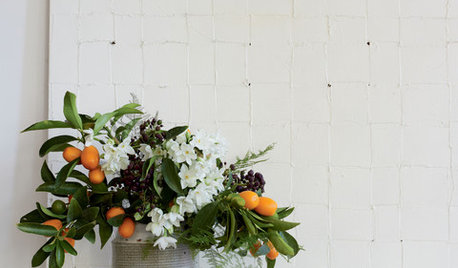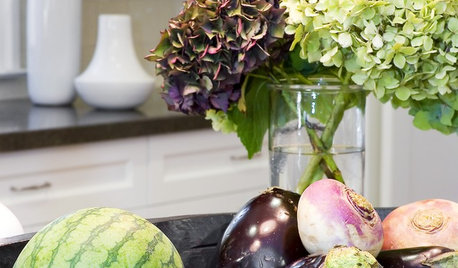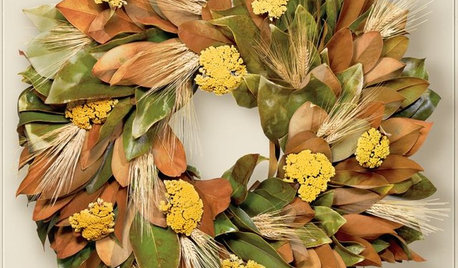Fall apple spraying
garyt33
15 years ago
Related Stories

EDIBLE GARDENSHow to Add an Apple Tree to Your Edible Garden
Readily available, beautiful and fragrant, apple trees offer four-season interest along with crisp, juicy fruit
Full Story
GARDENING GUIDES8 Plants for a Deliciously Fragrant Fall Garden
Scent the autumn air with the perfume of caramel corn, honey and spices by adding these intoxicating plants to your landscape
Full Story
DECORATING GUIDESPut Your Best Fruit Forward in Splendid Fall Arrangements
Luscious, colorful and unbeatably fresh, fruit-centered arrangements bring welcome flavor to fall home decor
Full Story
COLORApple Accents: Color from the Orchard Comes Home
Cheerful reds and crisp greens inspire everything from centerpieces to bedscapes
Full Story
FALL AND THANKSGIVINGFall Decorating Ideas From a Designer to the Stars
You might think all-out glitz and over-the-top glamour make up Adam Hunter's fall decorations. You'd be wrong
Full Story
GARDENING GUIDES8 Pickable Plants for Fall Centerpieces
Cut flowers and branches make for seasonal arrangements both easy and lovely. Grow these in the garden for the look and feel of fall
Full Story
FALL GARDENING7 Reasons Not to Clean Up Your Fall Garden
Before you pluck and rake, consider wildlife, the health of your plants and your own right to relax
Full Story
FALL GARDENING9 Deer-Resistant Flowering Shrubs to Plant This Fall
These exquisite shrubs will attract your attention but won’t tempt the deer that roam your neighborhood at night
Full Story
FALL GARDENING6 Trees You'll Fall For
Don’t put down that spade! Autumn is the perfect time for planting these trees
Full Story
Guest Picks: Fall Wreaths for Indoors or Out
Deck the front door with one of these 19 autumnal wreaths
Full StoryMore Discussions








mainegardener
jellyman
Related Professionals
Sand Springs Landscape Architects & Landscape Designers · Garden City Landscape Architects & Landscape Designers · Forest City Landscape Architects & Landscape Designers · Brookside Landscape Contractors · Addison Landscape Contractors · Bellefontaine Neighbors Landscape Contractors · Brookfield Landscape Contractors · Cliffside Park Landscape Contractors · El Segundo Landscape Contractors · Huntley Landscape Contractors · Newnan Landscape Contractors · Pacifica Landscape Contractors · Saint George Landscape Contractors · San Antonio Landscape Contractors · Selden Landscape Contractorsgaryt33Original Author
geraldo_linux
glenn_russell
garyt33Original Author
glenn_russell